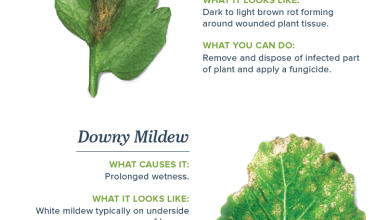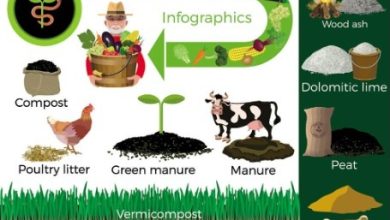5 plant ideas for house facades
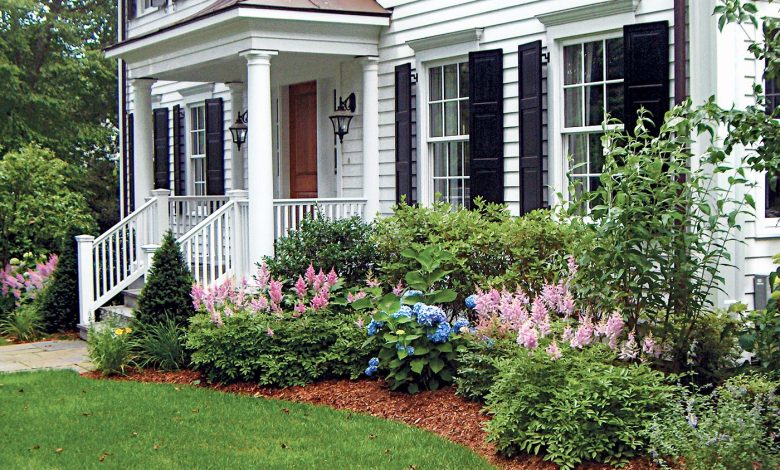
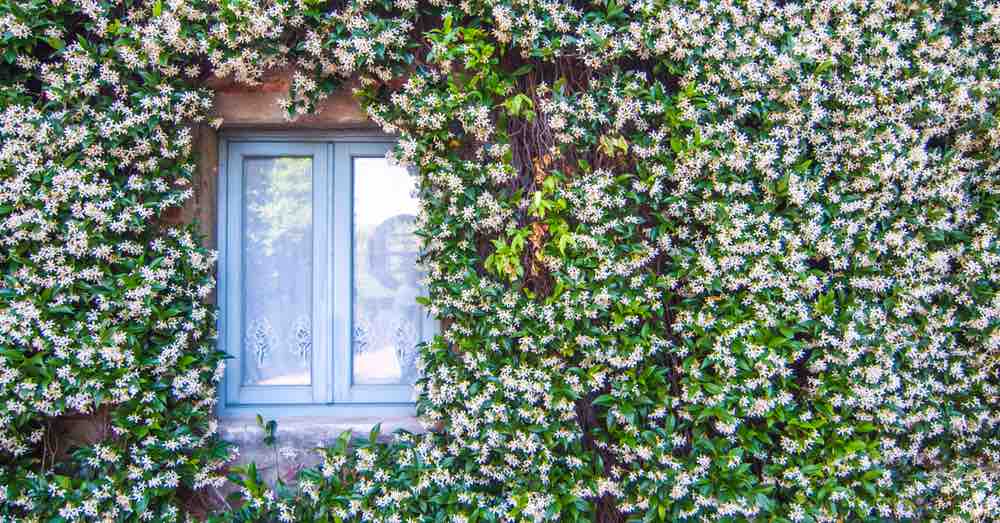
Creating a harmonious environment happens, on many occasions, by also dressing the walls with life. A way of decorating with nature in which plants for house facades are key. Thanks to them, we can upholster architecture with the beauty of flowers. A way to create an even more special and stimulating place.
When we talk about plants for house facades, we usually think of the typical ivy. Some that, in general terms, have been relegated to the background for being a true magnet for insects. Leaving them aside, it is possible to dress any wall with climbing plants. A way to embellish a facade but also to give us an even more beautiful view.
So, if you are looking for ideas about plants for house facades, you are in the right place. Because today we bring you a selection of five beautiful flowering plants.
PLANTS FOR HOUSE FAÇADES WITH FLOWER
Before seeing in detail the care of these plants for house facades, a precaution. One of the characteristics of climbing plants is that they usually have explosive and uncontrolled growth. A fact that not only forces us to guide it. Also and especially if the species is woody, to be rigorous with regard to pruning. Only in this way will we prevent it from invading spaces that we do not want, such as windows or gutters. Something that we can control and thus avoid greater evils.
With this consideration in mind, let’s look at five floors for house facades that are ideal for almost any orientation. Five ways to dress walls, and enjoy the beauty of flowers.
1. Jasmine, one of the most resistant plants for house facades
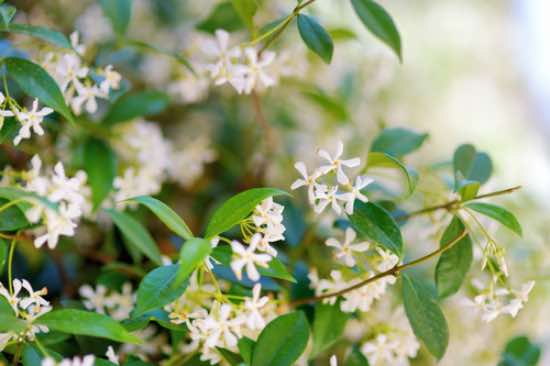
Jasmine’s versatility makes this flowering plant a favorite for almost any space. It is not only one of the most common plants for house facades. It is also one of the most used on balconies, terraces or simply planted near pergolas and gazebos. And it is that jasmine is not only a beautiful climbing plant easy to channel. In addition, it has other benefits as important as its beauty: it is extremely resistant.
Jasmine care is extremely simple. Despite being a heat-loving plant, it perfectly supports the cold. We just have to be careful with frost and cover its roots. In addition, it grows perfectly in semi-shade and, despite demanding regular watering in summer, it does not suffer excessively if it is forgotten.
Finally, two important tips. Jasmine requires good drainage, and a regular dose of organic fertilizer during spring and summer.
2. Bougainvillea, one of the queens of summer
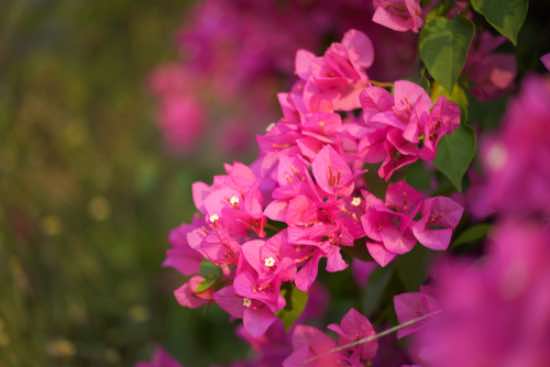
One of the most common plants for house facades on the Mediterranean coast. And it is not for less: if something distinguishes the bougainvillea, it is its spectacular nature. The tonality of its bracts fills any space with furious intensity. And, despite appearances, no: it is not complicated at all. What’s more: it is one of those plants that, with a little pampering, grows at a good pace from the beginning of each spring.
Bougainvillea care defines it as an undemanding plant. Its only demand as such is a soil rich in nutrients to be able to unfold its growth, which can reach 10 meters in height, and good light. Not even irrigation is among its most important care. Even in summer, a weekly watering will suffice. That yes: it is necessary to procure a good drainage system. The bougainvillea’s Achilles heel is its extremely sensitive roots.
For this reason, a piece of advice when the cold arrives: make a quilt. A simple and effective way to protect it from frost.
3. Wisteria, one of the plants for irresistible house facades
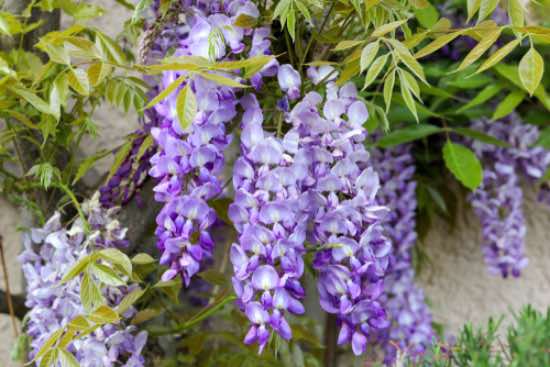
Its simple presence already completely changes any wall or facade. But, with the arrival of spring, it will make any surface gain even more presence. Its flowering, in the form of flower clusters, is one of those natural spectacles that occur twice a year: at the beginning of spring and at the end of summer. As if these reasons were not enough to consider having it, there is one more: it is a perfect climber for cold climates due to its great resistance to frosts of up to 10 degrees below zero.
It is not picky about watering, soil quality, or location, as it grows in full sun or semi-shade. But be careful: we have to be rigorous with pruning. A task that we will have to carry out in winter and summer, and that is absolutely mandatory. And it is that the other face of the wisteria contrasts with its beauty: its incredible growth should be tamed. Only in this way can we prevent it from causing any damage, since its stems become woody and tend to twist to continue climbing around whatever they find in their path.
4. Clematis, a beautiful fast-growing plant
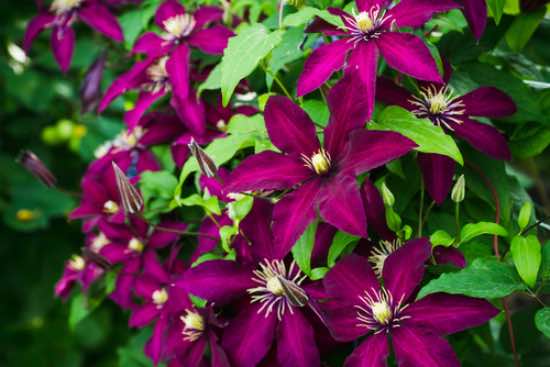
It is curious that, despite being one of the most common plants for house facades, a good number of people cannot identify it. And it can well be said that it is normal because the clematis plays the mistake: within this species, there are 400 different typologies. But let no one be scared: today we leave aside a good number of them, of a herbaceous nature, to focus on the climbers. A typology of easy cultivation, with a beautiful flowering and fast growth. You can not ask for more!
Clematis care will not complicate our lives much. It demands to be planted in semi-shade, a slightly moist substrate always and a soil rich in nutrients. To make it bloom more spectacularly, it is advisable to use a fertilizer from the beginning of spring. And beware: before putting scissors, it is advisable to know what kind of clematis we have. Because, despite the fact that a good part of the plants of this family share cultivation, the same does not happen with pruning. So, before we can ruin our plant, nothing like doing a little more research on it.
5. Dipladenia, one of the perennial house facade plants
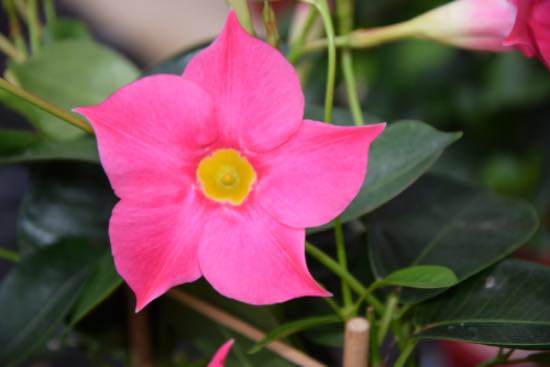
Also known as mandevilla and Chilean jasmine, it is a perfect choice for perennial lovers. Unlike other climbers, the dipladenia keeps its leaves during the winter months. Something highly appreciated, since it continues to fulfill its function of upholstering any façade or wall. But it is not the only attraction of this plant. Its flowering is one of the most spectacular, thanks to a good number of bell-shaped flowers that appear on the plant from the beginning of spring to the end of summer.
In addition to its beauty, dipladenia has another advantage: it is extremely easy to grow. It needs to be located in an extremely bright place and where it receives a few hours of direct sunlight. In addition, it is important that it enjoys good humidity, especially in the hot months. But be careful: avoiding waterlogging. Its roots are sensitive to excess water.
It is also important to apply, from the beginning of spring, a flowering fertilizer. This way you will not only achieve more flowers. Added, you will allow the plant to have strength to stand up to the annoying summer visitors. Eliminating pests is essential, and not only so that the plant can flourish: a pest can stop its growth.
Five floors for house facades that will turn human architecture into nature in its purest form.

![Photo of Kiwi Care: [Soil, Humidity, Pruning and Problems]](https://www.complete-gardening.com/wp-content/uploads/2022/08/kiwi-care-soil-humidity-pruning-and-problems-390x220.jpg)
